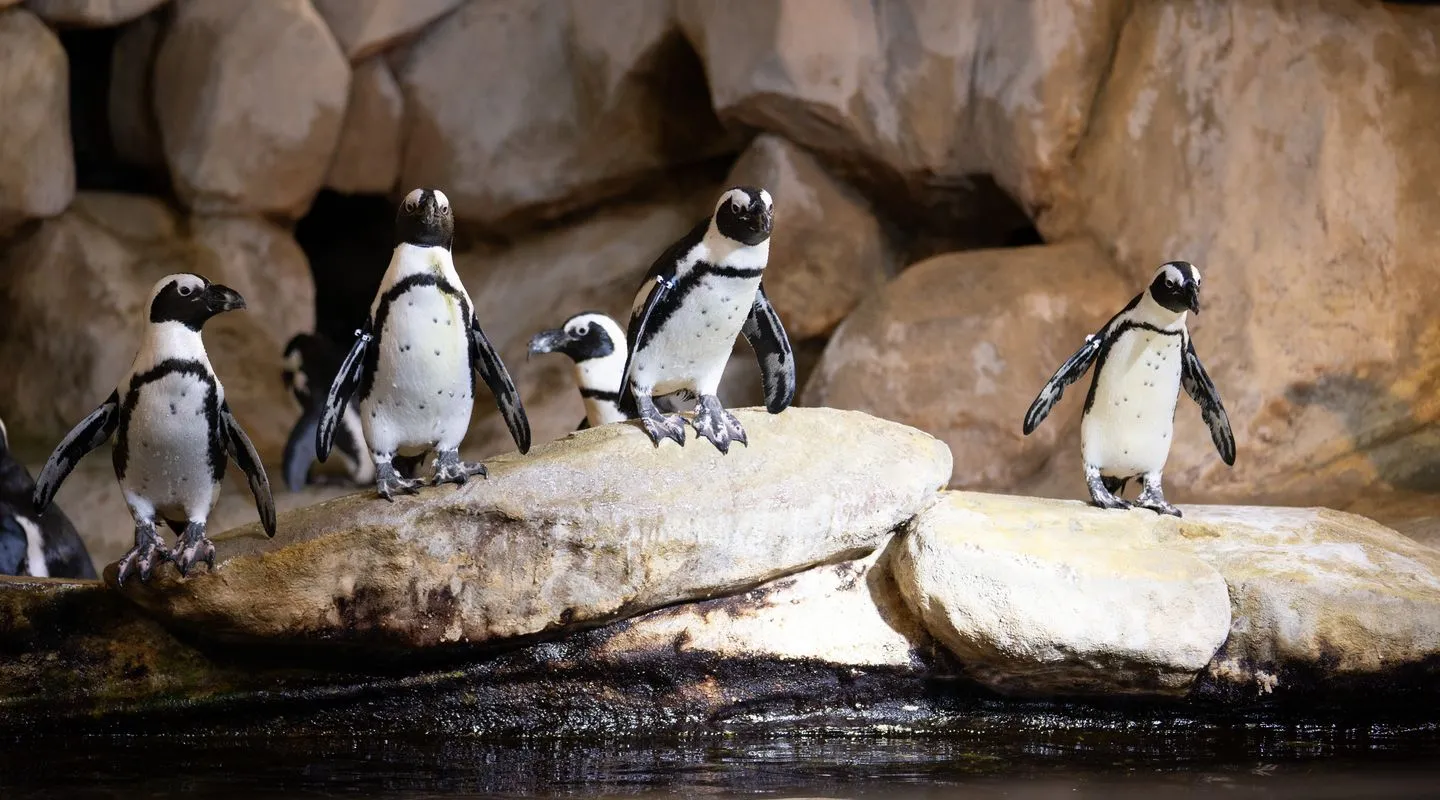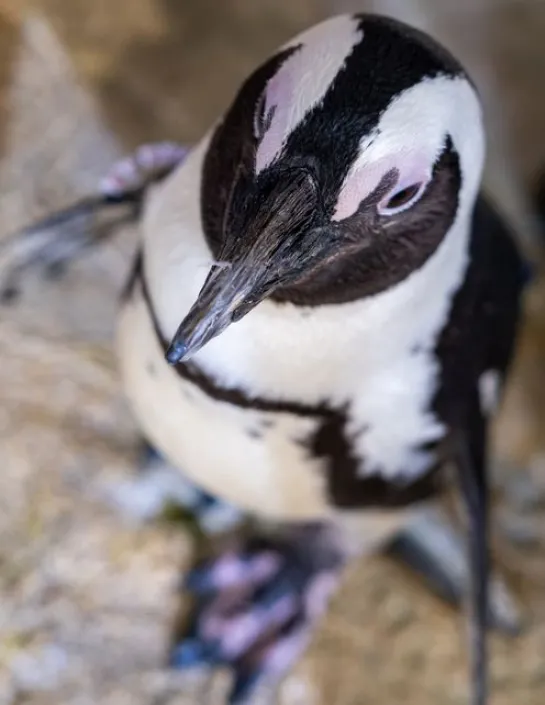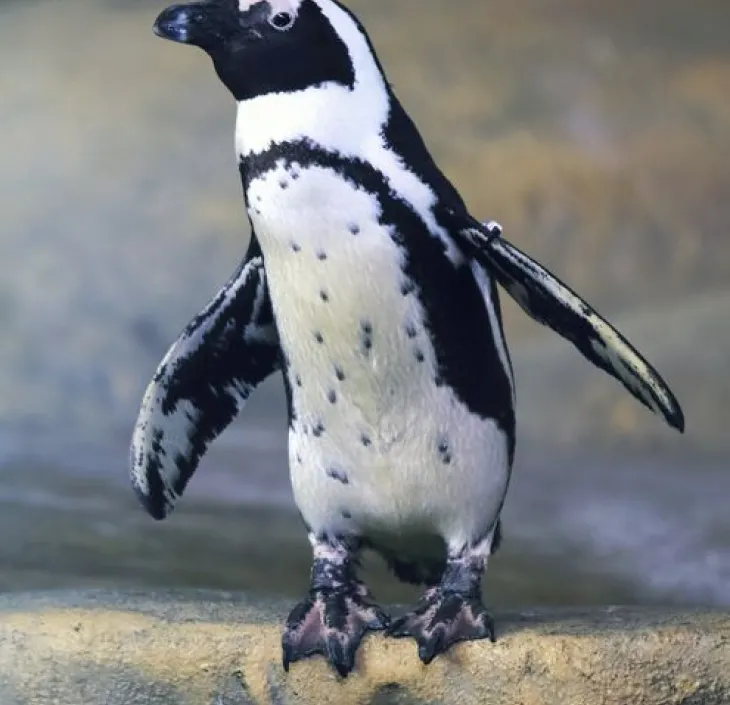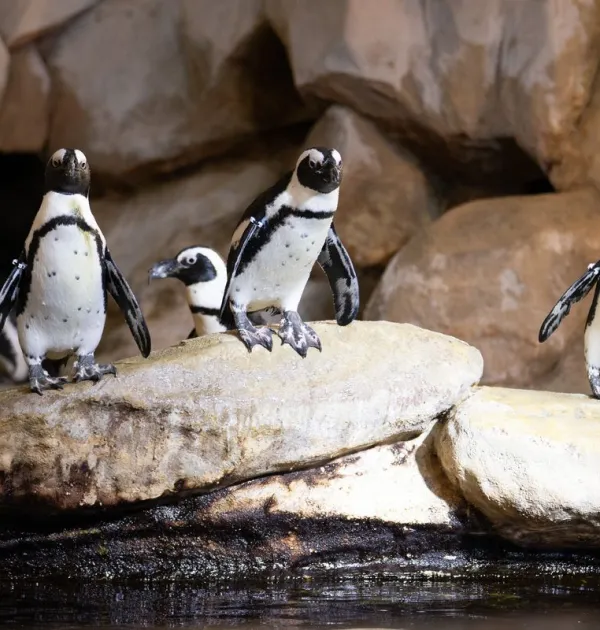There's a strong smell around here!
Some may find that their habitat smells strong. This is the smell of guano, which is the excrement of penguins. This smell is also strong in the natural environment.
In South Africa, guano has been exploited by humans for use as fertiliser because of its nitrogen content and this is another reason for the decline in the population of these birds. Only 80,000 African penguins live in their natural environment.
In Antarctica, traces of guano observed by satellite have enabled previously uncounted colonies of emperor penguins to be identified.
Where is the animal to be found?
This bird from South Africa lives in colonies, mainly on the coast of South Africa and in Namibia.
How can it be recognised?
It can measure 60 to 70 cm and weigh 2 to 4 kg. It is a sociable, gregarious and loyal animal. The penguin does not fly. It actually has short feathers that look more like "scales". However, it is a good swimmer. It can swim at over 12 km/h underwater. The penguin can travel a distance of 30 to 100 km to find food.
What is distinctive about it?
It communicates by emitting hoarse cries that sound like the braying of a donkey, especially at night.
The penguin forms a couple with its partner for several breeding seasons or even for life. It typically lays two eggs a year. The couple raise their offspring together and share the tasks. The young are then fed by regurgitation.
The incubation period of the egg is 39 days. It is impossible to tell at birth whether the baby penguin is a female or a male. In a few weeks, the handlers will collect a feather that will reveal the sex of the animal through DNA analysis.
There are currently 22 penguins living at NAUSICAA, including 10 pairs. Since 2009, 23 baby penguins have been born at the Centre.
Threat and protective measure
Threats to the penguin are mainly related to human activities: oil pollution such as oil spills, tourism and its associated coastal construction, accidental catches from fishing and over-consumption of the fish on which the penguins feed.




